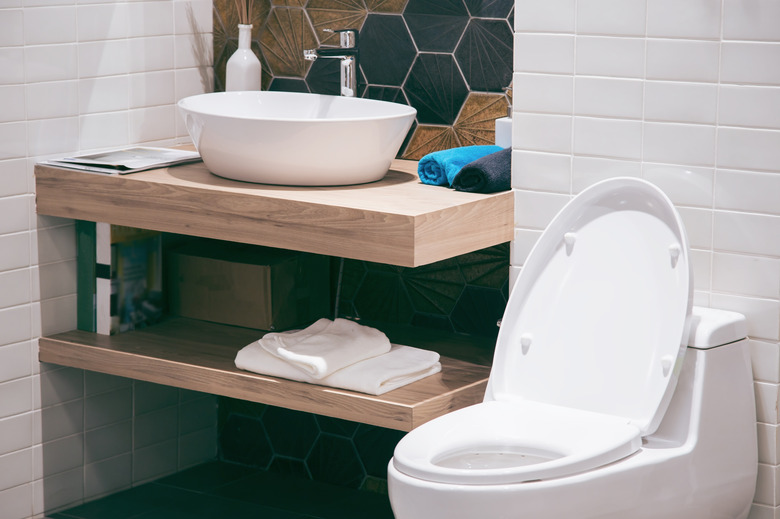How To Clear A Plumbing Vent Without Getting On A Roof
We may receive a commission on purchases made from links.
When you think of plumbing issues, you probably think of clogged toilets or leaky pipes, but issues with your plumbing vent system can interfere with all parts of your plumbing, from your toilets to your showers. Clearing clogs quickly is essential for your plumbing system. While clearing a clog from the roof is ideal, you might be able to clear the way from inside your attic.
Plumbing Vents and How They Get Clogged
Plumbing Vents and How They Get Clogged
The plumbing vent system works to regulate air pressure throughout your plumbing system. When it works properly, it prevents a vacuum from happening in the system that could cause the water to drain slowly or stop flowing completely. It also offers a way for gases and odors to exit your home.
Your plumbing vent typically exits your home on the roof. This leaves it exposed to leaves, branches, and other debris that can clog the vent pipe. In the winter, snow can block the vent stack, or ice can build up in and on the pipe.
Symptoms of a Clog
Symptoms of a Clog
It's not always easy to tell when you have a clogged plumbing vent, and some of the symptoms can be caused by other issues. If you've tried other troubleshooting for the issues and haven't found a solution, it could be a vent clog.
Some signs that you have a clogged vent include:
- Slow water drainage.
- Gurgling sounds in your drains.
- Sewer odors in your home.
Clearing Clogs From the Attic
Clearing Clogs From the Attic
Once you notice it, you need to clear the vent clog quickly to keep your plumbing system operating well. From the roof, you can remove debris that's clogging the opening, use water pressure by spraying your garden hose down it, or use a plumber's auger to break up the blockage. However, climbing onto the roof is dangerous, so attempting to clear the issues from inside is safer.
If your plumbing vent pipe is made from PVC, you can cut a section of it in your attic. You only need to cut out a section large enough to fit the auger into the pipe. Use a hacksaw to cut out the section of the pipe. Insert the auger, going downward to find the clog and break it up. If you can't find it below where you cut, you might need to run the auger up toward the roof to clear leaves or animal nests.
You'll need to replace the section you removed with rubber or PVC couplings. Use PVC cement to secure the replacement section.
Melting Ice From Inside
Melting Ice From Inside
If you're experiencing a clogged plumbing vent in the winter, the issue could be snow or ice that's blocking the vent pipe. Never climb on the roof in the winter as the slippery conditions increase the risk of a fall. Instead, do what you can to melt the snow or ice from your attic.
Some ways to melt the ice and keep it warmer to prevent additional freezing include:
- Hair dryer: Warm the pipe from the attic using a hair dryer. It can heat it enough to melt the snow or ice without being so hot that it damages the pipe or starts a fire.
- Insulation: Insulating the vent pipe as it runs through the attic can keep it warmer and reduce the risk of snow and ice buildup.
- Heat tape: Adding heat tape on the pipe in the attic is another way to keep it warmer and reduce snowy, icy buildup.
- Hot water: Cranking up the hot water in one of your sinks can send warm water vapor up the vent pipe. This might help melt some snow or ice.
When To Call a Plumber
When To Call a Plumber
If you don't have attic access, don't feel comfortable with the process, or can't clear the vent from inside, hire a plumber to clear the vent for you. The plumber will access the roof and clear the plumbing vent from above. A plumber can also test the system to ensure the venting is working properly and can make additional repairs to the vent system if necessary.
